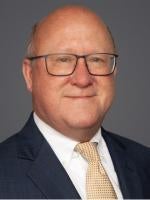In February 2013, during the early months of the second term of the Obama administration, a standard interpretation related to Occupational Safety and Health Act regulations at 29 C.F.R. § 1903.8(c) that later became known as the “Fairfax Memo” was issued. The Fairfax Memo was the tool that the administration attempted to use to allow union representative participation in Occupational Safety and Health Administration (OSHA) inspections at nonunion workplaces.
That standard interpretation answered two questions from the United Steel, Paper and Forestry, Rubber, Manufacturing, Energy, Allied Industrial and Service Workers International Union. The standard interpretation was used to permit union representatives, including union organizers, to participate in OSHA inspections. In 2017, in the face of mounting legal challenges, OSHA officially rescinded the “Fairfax Memo.”
Quick Hits
OSHA is working on a proposed rule that would eliminate the limitation on who can participate in an OSHA inspection of a workplace and expand the definition of “a third party.”
The broader definition could include third parties who are community activists and union representatives unassociated with the workforce in a given inspection location.
Such regulatory changes could have major implications for employers being inspected by OSHA.
In the Biden administration’s Fall 2022 Unified Agenda of Regulatory and Deregulatory Actions, published on January 4, 2023, OSHA announced it was planning to publish a notice of proposed rulemaking (NPRM) related to 29 C.F.R. § 1903.8(c). That announcement stated:
This rulemaking will clarify the right of workers and certified bargaining units to specify a worker or union representative to accompany an OSHA inspector during the inspection process/facility walkaround, regardless of whether the representative is an employee of the employer, if in the judgment of the Compliance Safety and Health Officer such person is reasonably necessary to an effective and thorough physical inspection.
Though some have characterized the NPRM as a rollback of the rollbacks associated with the Trump administration, the “Fairfax Memo” was first rolled back during the Obama administration. With the forthcoming NPRM, OSHA is attempting to reinstate the premise of the memo by formally amending the regulation itself. The Fall 2022 Regulatory Agenda indicated that the NPRM would be issued in May 2023, and it would not be unreasonable to expect the NPRM’s issuance in the near future.
29 C.F.R. § 1903.8(c) currently reads as follows:
The representative(s) authorized by employees shall be an employee(s) of the employer. However, if in the judgment of the Compliance Safety and Health Officer, good cause has been shown why accompaniment by a third party who is not an employee of the employer (such as an industrial hygienist or a safety engineer) is reasonably necessary to the conduct of an effective and thorough physical inspection of the workplace, such third party may accompany the Compliance Safety and Health Officer during the inspection.
The announcement in the Fall 2022 Regulatory Agenda suggests that an alteration would be made to the language of the rule that would eliminate the limitation on who can participate in an inspection, expanding the definition of “a third party who is not an employee of the employer (such as an industrial hygienist or a safety engineer) [who] is reasonably necessary to the conduct of an effective and thorough physical inspection of the workplace” to include community activists and union representatives not associated with the workforce in the inspection location.
If such an alteration to 29 C.F.R. § 1903.8(c) were adopted, the run-of-the-mill OSHA inspection could forever change in several ways. First, community activists and union representatives would gain, through participation in an inspection, useful knowledge or relationships to facilitate an organizing campaign. Currently, third parties cannot come onto an employer’s premises to organize employees (although the National Labor Relations Board is attempting to change this rule), but this sort of change would give organizers and community activists just such an opportunity. Union organizers or community activists would likely be allowed to gain access to an employer’s premises during business hours and interact with employees while accompanying an OSHA compliance officer. Ostensibly, they would also be allowed to participate in OSHA’s private interviews with employees, which would give union organizers a captive audience.
During organizing campaigns, the number of OSHA complaints raised at a workplace typically increase. Union organizers frequently claim an employer does not care about workers’ safety and the union can make the employer improve safety. With modifications to the rule, union organizers would gain the additional persuasiveness of having their arguments buttressed by the act of accompanying a government official who is in a workplace to ensure it is safe and healthful. Additionally, it is anticipated that the rule change would allow representatives from another union that wishes to unionize employees outside of the current bargaining unit or supplant the union that has enjoyed a benevolent relationship with the employer.
Second, having an outside special interest or union activist at a worksite during an inspection may strain the employer’s ability to cast its workplace in the most favorable light. OSHA only publicizes citations and penalties—conditions OSHA contends violate its safety standards. With the exception of inspections resulting in large fines, fatalities, or catastrophes, most OSHA inspections receive little to no public attention, even in terms of OSHA press releases. Community or union activists may have a different agenda relative to reporting on the details of an inspection or creating reputational harm to employers. Community activists may want to draw attention to conditions that may appear alarming to the public, even when the conditions are consistent with best practices in the industry and not considered violations of OSHA standards.
For example, if representatives of an environmental group were allowed on-site they might be permitted to conduct their own air sampling or have access to OSHA’s air sampling information that is almost never released in the public domain in the absence of a Freedom of Information Act request. If a community activist or union representative were to have access to that information, employers could expect the information to be shared in print, at community meetings, or at any time the employer was involved in a regulatory matter, whether tied to an inspection or not.
Third, community activists and union activists could impact the findings of OSHA investigations. While OSHA’s Field Operations Manual and established law discourage OSHA compliance officers from engaging in outcome-based inspections, the presence of unrelated third-party activists could create pressure on compliance officers to reach certain outcomes that align with activists’ concerns.
Finally, participation by outside activists may increase the risk that the scope of an inspection will broaden with a community activist’s or union organizer’s help in finding probable cause for s scope expansion. Accordingly, employers may experience more difficulty controlling physical or visual access to areas not involved in the incidents or programs that brought OSHA on-site. An activist may provide a greater breadth of knowledge for an inspection and educate and cue the OSHA compliance officer to other areas and possible violations.
An actual rule will require time for OSHA to develop, go through a corresponding notice and comment period, and publish before becoming effective. In the interim, given that this regulatory agenda item exists, it would not be unusual for activists and others to push back on inspections that do not include them. Employers may want to note that the proposal under consideration is not current OSHA policy.




 />i
/>i

